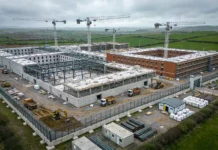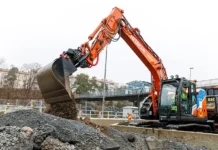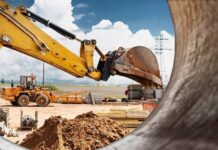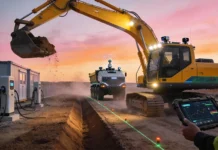The Evolution of Hydraulic Power Systems
Hydraulic technology has powered construction equipment for decades, yet conventional systems operate through relatively simple principles—pressurized fluid transmitting force through fixed pathways. Modern smart hydraulics fundamentally transform this approach, introducing intelligence that optimizes power delivery, recovers waste energy, and adapts system behavior to operational requirements in real-time.
Contemporary equipment operates in increasingly competitive environments where operational efficiency directly impacts profitability. Smart hydraulics in construction delivers efficiency improvements enabling contractors to reduce fuel consumption, minimize equipment stress, and extend service intervals. These operational improvements compound across entire fleets, generating substantial economic advantages while reducing environmental footprints.
Fundamental Principles of Intelligent Hydraulic Systems
Digital Pressure Control and Flow Optimization
Traditional hydraulic systems maintain constant pressure regardless of actual load requirements, consuming energy wastefully during low-load operations. Pressure-compensated pumps introduced first-generation efficiency improvements, but smart hydraulic systems employ sophisticated digital controls enabling continuous pressure optimization matched precisely to instantaneous load conditions.
Load-sensing hydraulic systems represent intermediate technology evolution, proportionally adjusting pump displacement to match actual flow requirements. Smart hydraulics advances this concept through predictive algorithms anticipating load changes before they materialize, pre-positioning pump output to minimize flow disruption and pressure surges.
Digital proportional controls replace mechanical pressure regulators with electronic systems responsive to microsecond-scale adjustments. These systems maintain optimal pressure delivering only the power required for specific tasks, reducing wasted energy dissipation as heat. Advanced algorithms learn operational patterns, predicting future loads and optimizing pressure trajectories accordingly.
Energy Recovery Technologies
Conventional hydraulic systems exhaust spent fluid at atmospheric pressure, discarding substantial energy. Regenerative systems capture this waste energy, redirecting it to accumulator storage for later use. Flywheel-based systems employed in European equipment capture braking energy during deceleration, storing mechanical energy that assists acceleration during subsequent operational phases.
Hybrid hydraulic-electric systems represent revolutionary integration of multiple power sources. Electric motors power hydraulic pumps during precision operations requiring minimal force, enabling superior control while reducing fuel consumption. During high-power phases, internal combustion engines drive primary hydraulic operations, with electric motors seamlessly transitioning to auxiliary support roles. This hybrid approach optimizes each power source for operational phases where it delivers superior efficiency.
Recuperation systems employ accumulators smoothing pressure fluctuations and capturing transient energy spikes that would otherwise dissipate as heat. As bucket fills or blade engages soil, load spikes that create pressure surges in conventional systems activate accumulator charging in smart systems. This stored energy assists subsequent operations, reducing fuel requirements for recovery phases.
Advanced Control Systems and Automation
Proportional Directional Control Valves
Proportional valves enable smooth modulation of flow direction and magnitude with precision impossible through conventional on-off controls. Spool position continuously adjusts relative to control input, enabling infinitely variable flow rates between extremes. Closed-loop feedback systems maintain actual flow precisely matching command inputs despite pressure variations or external disturbances.
Integrated electronics compensate for valve wear and temperature-induced drift, maintaining performance consistency throughout equipment lifespan. Diagnostic systems detect valve degradation before performance impacts reach customer perception thresholds, enabling proactive maintenance preventing operational surprises.
Modern proportional valves exhibit response frequencies and precision far exceeding what experienced operators could command through mechanical controls. This superior control responsiveness enables operational techniques impossible with conventional systems—smoother load engagement, reduced material spillage, and enhanced precision.
Predictive Load Sensing and Compensation
Advanced sensors continuously monitor system pressures, flow rates, and accumulator states. Machine learning algorithms process this data identifying operational patterns and predicting upcoming load changes. When algorithms recognize patterns indicating imminent high-load conditions, systems pre-charge accumulators and position hydraulic components optimizing response.
Pressure surge protection systems detect sudden pressure spikes indicating load changes or operational anomalies. Proportional dump valves divert excess flow before pressure exceeds equipment design limits, preventing damage while maintaining power delivery. These protective systems operate transparently to operators, managing complex dynamics automatically.
Temperature management systems optimize fluid viscosity across wide ambient ranges. Intelligent heating and cooling circuits maintain fluid within optimal temperature windows, preserving viscosity properties and ensuring consistent performance during cold starts and hot-weather operations. Predictive algorithms adjust thermal management in advance of anticipated temperature changes, preventing transient performance fluctuations.
Hydraulic Fluid Innovation and System Efficiency
Bio-Based Hydraulic Fluids
Environmentally conscious equipment increasingly employs hydraulic fluids derived from renewable sources. Bio-based hydraulics offer comparable performance to petroleum-derived fluids while providing superior biodegradability and reduced toxicity. These formulations particularly benefit equipment operating near water resources where environmental liability drives adoption.
Advanced synthetic fluids exhibit performance advantages including extended service intervals—sometimes doubling or tripling fluid change requirements compared to conventional hydraulics. Superior viscosity stability across temperature ranges improves performance consistency, while enhanced oxidation resistance reduces fluid degradation during extended operation.
Fluid filtration systems have become increasingly sophisticated, with multistage filtration preventing particulate accumulation that degrades component efficiency. Return-line filtration combined with offline kidney-loop systems maintains fluid cleanliness throughout extended service intervals. Particle counting sensors monitor actual fluid condition, enabling predictive maintenance scheduling based on objective criteria rather than arbitrary time intervals.
Pressure and Flow Harmonization
Smart hydraulic systems employ variable displacement motors and proportional controls enabling smooth power transmission without the pressure spikes characteristic of conventional systems. Gradual load engagement distributes stress across longer time periods, reducing peak pressures and component wear.
Flow sharing systems distribute pump output across multiple actuators, preventing situations where single circuits demand peak pressure while others remain idle. These systems dynamically adjust valve configurations optimizing overall efficiency. Experienced operators recognize this hardware-level intelligence as enabling superior performance compared to conventional equipment requiring careful sequencing of operations.
Integration with Building Information Modeling and Digital Twins
Real-Time Performance Monitoring
Smart hydraulic systems generate continuous data streams documenting operational conditions, efficiency metrics, and component health indicators. These data feed digital twin models that simulate equipment performance, predict maintenance needs, and optimize operational strategies. Contractors accessing these digital representations understand equipment state in granular detail enabling superior management decisions.
Telematics systems transmit performance data to manufacturers and fleet managers, enabling remote diagnostics and predictive maintenance scheduling. When digital twin analysis suggests component degradation approaching critical thresholds, service personnel schedule replacement during planned downtime rather than responding to emergency failures. This proactive approach minimizes project disruptions while reducing maintenance costs.
Performance analytics derived from smart hydraulic data enable continuous improvement. Fleet managers identify operational inefficiencies, recognizing when specific operators employ techniques reducing efficiency. Training interventions target identified deficiencies, improving overall fleet performance. Comparative analytics highlight superior-performing units, enabling documentation of best practices.
Optimization Algorithms and Machine Learning
Advanced algorithms analyze historical performance data identifying relationships between operational parameters and fuel consumption. These insights enable real-time recommendations optimizing current operations. Experienced operators often receive suggestions confirming their intuitive practices while others discover techniques previously unknown.
Predictive maintenance algorithms learn component degradation patterns from extensive operational data. Cumulative sensor information feeds classification models identifying characteristic signatures associated with imminent failures. Alerts generated with sufficient advance warning enable maintenance scheduling preventing disruptions.
Energy efficiency algorithms identify opportunities for operational refinement. When systems detect patterns where alternative sequencing would reduce power requirements, they communicate suggestions to operators or automatically implement preferred strategies when appropriate. This continuous optimization ensures equipment operates efficiently despite changing ground conditions and project requirements.
Sustainability and Environmental Performance
Emissions Reduction Through Efficiency
Smart hydraulics delivers substantial fuel consumption reductions compared to conventional systems. Field studies document 15-30% fuel consumption decreases for equipment retrofitted with advanced hydraulic systems. These reductions translate directly to lower operating costs while reducing carbon emissions proportional to fuel savings.
Hybrid hydraulic-electric systems achieve even greater efficiency gains in appropriate applications. Wheel loaders and excavators operating with frequent idle periods benefit particularly from hybrid systems, with electric motors eliminating fuel consumption during positioning phases. Total energy consumption reductions of 30-50% prove achievable depending on operational duty cycles.
Zero-emission equipment employing fully electric powertrains represents ultimate sustainability objective. Advanced hydraulic systems enable electric equipment delivery of performance comparable to conventional diesel-powered machines. As electrical grid decarbonization progresses, electric construction equipment enables operations with minimal environmental impacts.
Fluid Management and Environmental Protection
Biodegradable hydraulic fluids and sophisticated leak detection systems minimize environmental contamination risk. Sealed hydraulic systems prevent fluid loss reducing replacement frequency and environmental exposure. Spill containment systems integrated with equipment design ensure that catastrophic failures do not produce environmental contamination.
Recovery systems prevent hydraulic fluid contamination of groundwater and surface water resources. Regulations increasingly mandate containment and recovery capabilities, and smart hydraulic systems facilitate compliance through superior leak prevention and material capture.
Industry Implementation and Adoption Barriers
Manufacturer Technology Leadership
Equipment manufacturers increasingly recognize smart hydraulics as competitive differentiator. Leading organizations invest substantially in research and development advancing hydraulic control systems. Technology licensing and partnerships enable smaller manufacturers accessing advanced systems without developing proprietary technologies independently.
Standardization efforts promote interoperability and reduce technology barriers. Industry consortiums develop hydraulic system standards enabling components from multiple manufacturers to integrate seamlessly. This standardization reduces costs while accelerating adoption across equipment classes.
Contractor Education and Workforce Development
Successful smart hydraulics deployment requires operator training and maintenance technician certification. Progressive contractors invest in workforce development programs ensuring personnel understand advanced system capabilities. Hands-on training emphasizing energy-efficient operation techniques and predictive maintenance procedures accelerates adoption benefits realization.
Service providers increasingly specialize in smart hydraulic system maintenance. Technical expertise centered on advanced diagnostic tools and component understanding commands premium service fees reflecting value delivered. Contractors prioritizing preventive maintenance relationships with capable service providers realize superior equipment reliability compared to reactive approaches.
Future Advancements and Emerging Technologies
Artificial intelligence continues advancing hydraulic system optimization capabilities. Deep learning networks processing extensive operational datasets develop increasingly sophisticated understanding of optimal control strategies. As computational capabilities advance, real-time optimization achieves levels of sophistication impossible through conventional algorithms.
Blockchain technology enabling secure equipment-manufacturer communication opens possibilities for autonomous equipment operation. Equipment accessing maintenance authorization through distributed ledger systems enables self-directed service scheduling and optimized operational parameters. This autonomous capability represents future evolution of smart hydraulics integration.
Regenerative energy storage systems incorporating supercapacitors and advanced batteries enable hybrid equipment capturing braking energy and utilizing it during subsequent acceleration phases. These systems prove particularly valuable in urban construction applications where frequent start-stop cycling wastes substantial energy through friction-based braking.
Smart hydraulics in construction represents fundamental transformation of how equipment delivers power and precision. As technologies mature and adoption accelerates, contractors who embrace advanced hydraulic systems establish competitive advantages through superior efficiency, reduced environmental impact, and enhanced reliability. The construction equipment industry’s future increasingly depends upon these intelligent systems becoming standard rather than premium offerings.






























